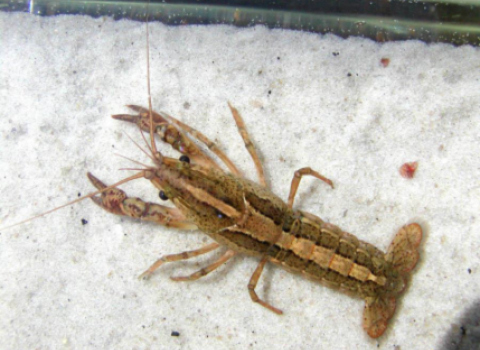The U.S. Fish and Wildlife Service is proposing to list the emperor penguin, a flightless seabird endemic to Antarctica, as threatened with a 4(d) rule under the Endangered Species Act (ESA). Climate change, specifically melting sea ice, is the primary threat to the species.
Emperor penguins need sea ice to form breeding colonies, forage for food and avoid predation. As carbon dioxide emissions rise, the Earth’s temperature will continue to increase, causing large patches of sea ice to melt. The melting ice could affect a variety of species, including emperor penguins, who rely on sea ice for survival.
“The Service uses the best available science to propose ESA listing determinations,” said Martha Williams, Principal Deputy Director of the Service. “Climate change, a priority challenge for this Administration, impacts a variety of species throughout the world. The decisions made by policymakers today and during the next few decades will determine the fate of the emperor penguin.”
While emperor penguin populations are currently robust, the species is in danger of extinction in the foreseeable future in a significant portion of its range. There are approximately 61 breeding colonies along the coastline of Antarctica and the species’ population size is estimated to be between 270,000 - 280,000 breeding pairs or 625,000 - 650,000 individual birds.
However, according to the best available science, their global population size will likely decrease between 26 percent (to approximately 185,000 breeding pairs) and 47 percent (to approximately 132,500 breeding pairs) by 2050 under low and high carbon emissions scenarios, respectively.
The estimated decrease in population size is not equal across Antarctica. The Ross and Weddell Seas are strongholds for the species, and populations in these areas will most likely remain stable. However, emperor penguin colonies within the Indian Ocean, Western Pacific Ocean, and Bellingshausen Sea and Amundsen Sea sectors are projected to decline by over 90 percent due to melting sea ice.
While this estimated decline is concerning, the proposal to list the emperor penguin as threatened under the ESA comes while there is still time to prevent the species from becoming endangered throughout a significant portion of its range.
Section 4(d) of the ESA allows the Service to issue regulations that are necessary to conserve imperiled species. Accordingly, the Service is proposing a 4(d) rule for the emperor penguin that would provide specific exceptions for any activity that is permitted by the National Science Foundation under the Antarctic Conservation Act.
The proposed 4(d) rule would also provide exceptions for interstate commerce from public institutions to other public institutions, specifically museums, zoological parks and scientific institutions; emergency circumstances; salvaging a specimen; or for law enforcement purposes. The Service may also issue permits to carry out otherwise prohibited activities, such as scientific research or projects that enhance the survival of the species in the wild.
The emperor penguin is the tallest and heaviest of all living penguin species. Adults may weigh up to 88 pounds and are as tall as 45 inches. Males and females are similar in plumage and size, although males are slightly larger than females.
Females lay one egg each breeding season, which males incubate on their feet for two months while females go to sea to feed. Once the egg hatches, males and females alternate between chick rearing duties and food gathering until the chick can regulate its temperature, and then both adults forage simultaneously to provide enough food for their growing chick. Chicks depart the colony after about 150 days, returning again at four years of age to breed for the first time at age five.
The proposed rule to list the emperor penguin as threatened under the ESA will publish in the Federal Register on August 4, 2021, opening a 60-day public comment period. The Service will consider comments from all interested parties received by October 3, 2021. Information on how to submit comments is available at www.regulations.gov by searching under docket number FWS-HQ-ES-2021-0043.
The Service uses the best available science to make ESA listing determinations and is required to list imperiled species as endangered or threatened regardless of their country of origin. The ESA provides numerous benefits to foreign species, primarily by prohibiting activities such as import, export, take, interstate commerce and foreign commerce. By regulating these activities, the United States helps conserve imperiled species across the world.
To learn more about the Service’s Branch of Delisting and Foreign Species, visit: https://www.fws.gov/endangered/what-we-do/foreign-species.html.



